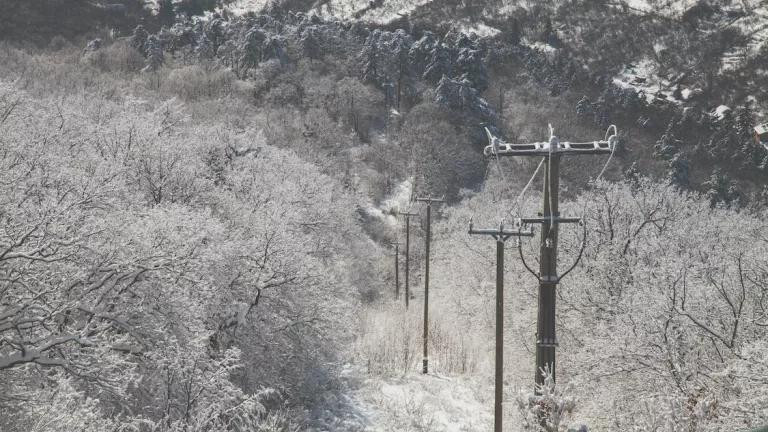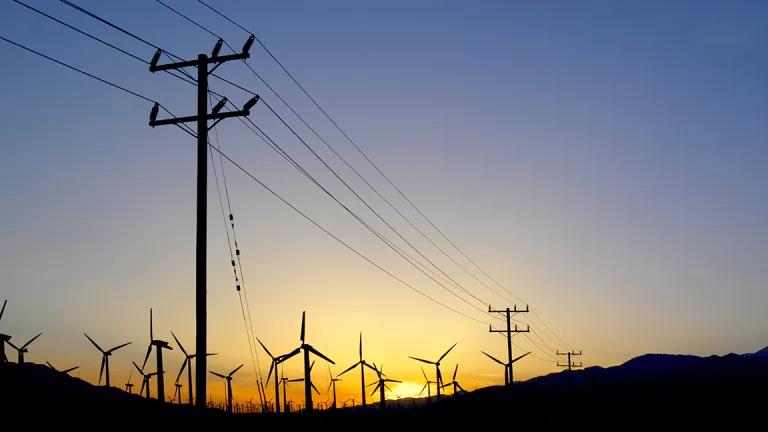Rate Increases and Blackouts: Duke Energy’s Strategy for 2023
Duke failed to keep the lights on last December, but it is now pursuing enormous rate increases of more than 30 percent to help pay for fossil fuels and huge executive salary raises.
Duke Energy has proposed an eye-watering rate increase of around 16 to 18 percent in North Carolina each year, over the next three years. Seventy-five percent of the additional revenue is going toward bolstering the existing grid to keep it from failing, even though the failures during the most were caused by Duke’s over-reliance on fossil energy. In addition, Duke is seeking close to a 17 percent rate increase by September to cover the rising costs of gas and coal. NRDC, along with our partners, has intervened in the rate case and plans to challenge any and all wasteful spending.
An energy study for North Carolina
Time and again in recent months, utility company Duke Energy has been ineffective at providing its North Carolina customers reliable and affordable service. In December 2022, during the coldest week of the year, the utility instituted rolling blackouts as it was unable to provide the electricity needed to keep the lights on. Then, at the start of 2023, Duke announced its proposal for an eye-watering energy bill increase of around 16 to 18 percent for its North Carolina customers. This is why, on March 28, North Carolina State Representative Larry Strickland (NC-28) announced a bill aimed at reviewing the electricity market and potential reforms—because North Carolinians deserve better from their energy providers.
House Bill 503, also known as the Storm Resiliency Study, would direct the Policy Collaboratory at the University of North Carolina at Chapel Hill to conduct a study of North Carolina electricity market reforms and issue a report to the General Assembly regarding any proposed reforms and associated public benefits. The legislation, modeled after a recent study conducted in South Carolina, is based on a bill that Representative Strickland introduced in 2021—and that Duke Energy spent more than $500,000 to defeat.
In South Carolina, after years of rising costs and massive cost overruns (associated with an attempt to build nuclear plants) being passed on to residents, the Republican-controlled legislature decided to fund a study to see whether South Carolina should implement electricity market reforms to add energy competition, such as joining a Regional Transmission Organization like PJM or separating the generation from the distribution.
The most important thing about South Carolina’s study was that its legislature wanted to find out what impact these things would have on ratepayers. Would it help bring down costs and improve reliability for customers, or would it make them worse? The legislature passed a bill and then completed the study before releasing the results last week. The South Carolina study, conducted by the Brattle Group, showed potential savings of more than $300 million dollars per year if the state joined regional wholesale electricity markets.
Duke Energy: Failing up and letting customers down
During Christmas weekend last year, Duke Energy cut power to about 15 percent of its North Carolina customers (approximately 500,000) during an extreme cold weather event. Because Duke Energy’s coal and gas plants froze or did not generate the electricity expected, it was left to beg for additional power from regional markets, like PJM in the Northeast. Duke Energy announced on March 1 its request to the North Carolina Utilities Commission (NCUC) for a residential rate increase of 16.6 percent by September 1 to pay for the skyrocketing costs of fossil fuels. (Fossil fuels that the utility shouldn’t even be using at the current rates.)
Additionally, Duke Energy is in the midst of a parallel proceeding asking the NCUC to increase customers’ rates by an additional 16 to 18 percent over the next three years for security improvements and investments in the electric grid. Together, North Carolina residents are looking at an outrageous 30 percent rate increase over the next few years. In the same month that Duke Energy requested those crippling increases to electric rates, it came out that the total compensation package for Lynn Good, the CEO of Duke Energy, “jumped to $21.35 million in 2022, almost 30 percent more than her total $16.45 million reported for 2021.” Talk about being rewarded for failure: failure to keep the lights on, failure to keep rates low, and failure to serve its customers, especially those most vulnerable to the harm of these rate increases.
The state of play for energy in the Southeast
In the Southeast—particularly Alabama, Georgia, North Carolina, South Carolina, and Tennessee—electricity service is handled by vertically integrated monopolies. As an example, in North Carolina, Duke Energy owns the power plants generating electricity and it also owns and manages the wires used to transmit and deliver that power into people’s homes and businesses. No one else is allowed to own a power plant and compete with Duke Energy. And although others are able to build solar systems, they have a tough time getting Duke Energy to connect to their wires and to buy their power. This isn’t the case in many parts of the country.
In North Carolina, we have the following confluence of events:
- A utility that is trying to invest in fossil fuels and limit its and others’ investments in clean energy; and
- A utility that is trying to pass on unnecessary expenses to ratepayers while seeing record profits.
In 2021, the Republican-led legislature and Democratic Governor Roy Cooper came together to agree on the goal of achieving affordable clean energy for all North Carolinians. Right now, Duke Energy seems to be doing everything it can to delay or avoid that shared goal.
A stakeholder group studying market reforms as part of the North Carolina Clean Energy Plan process, called the North Carolina Energy Regulatory Process (NERP), also proposed the state evaluate joining a regional market due to its economic and reliability benefits. NERP stated in its report that “the General Assembly of North Carolina [should] direct the NCUC to conduct a study on the benefits and costs of…wholesale electricity market reform options and the related implications for the North Carolina electricity system.”
According to an August 2020 survey of 600 likely North Carolina voters conducted by veteran pollster Paul Shumaker:
- 66 percent of those surveyed favored allowing private sector energy generation companies (independent power producers) to build generation facilities and sell electricity directly to consumers.
- 70 percent of those surveyed favored allowing independent power producers to use new technology to store intermittent energy (solar and wind) and dispatch it to compete with government-regulated monopoly generation.
- 80 percent of those surveyed favored allowing private sector power generation companies to compete against each other and utilities to provide electricity based on price and reliability.
What’s next? Enact the Storm Resiliency Study
With families struggling amid rising energy costs to pay for both exorbitant fossil fuel prices and generous salary increases for Duke Energy’s CEOs, we can see why Duke Energy is afraid of allowing any competition into North Carolina’s energy market. Right now, Republican state legislators are considering legislation that will study options for reforming the state’s government-mandated energy monopoly to allow for more cost savings for customers and grid resiliency. In other words, North Carolina’s lawmakers want to find out what’s best for North Carolinians rather than what’s best for Duke Energy. It’s critical that HB 503 is passed during this year’s legislative session.




